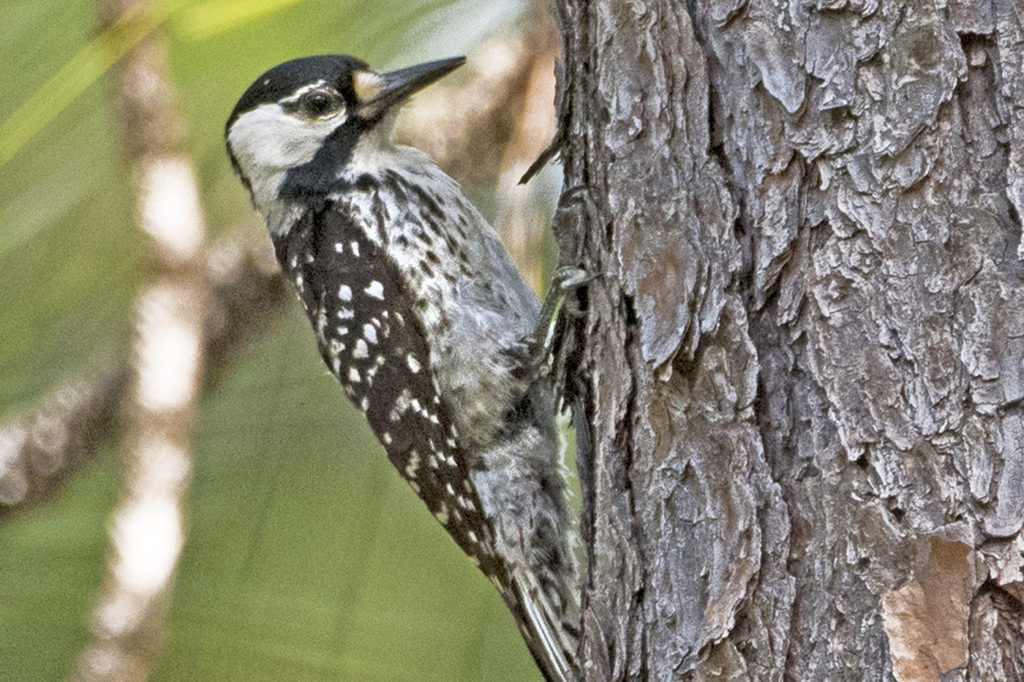
Once nearly extinct, the red-cockaded woodpecker is making a comeback, but Central Electric Power Cooperative will continue its proven conservation efforts as it navigates a new power line through federal forestland the bird calls home.
The generation and transmission co-op headquartered in Columbia, South Carolina, is prioritizing preservation of the woodpecker’s habitat in its plans for a transmission route through Francis Marion National Forest. The co-op says it will continue its efforts even if federal protections for the bird are eased.
“Our focus is to ensure the ongoing maintenance standards adopted are sound, balance what the electric utility is required to do for maintenance and to preserve and enhance the population of the species,” said Mark Svrcek, Central’s senior vice president of member solutions and operations support.
With population numbers on the rise, the U.S. Fish and Wildlife Service has proposed to “downlist” the federally protected woodpecker from “endangered” to “threatened” under the Endangered Species Act.
USFWS also is proposing a “4(d) rule” to ban activities that could result in accidental bird deaths. They include operating vehicles, mechanical equipment, lights at night and other human activities in habitat areas during the bird’s breeding season. Exceptions may be granted for required maintenancefor the safe operations of existing infrastructure, such as rights of way.
Central is studying three potential corridors for the 115-kilovolt power line that will serve the area adjacent to the McClellanville community in Berkeley Electric Cooperative’s service area. The G&T has been working with multiple stakeholders including the USFWS, the U.S. Forest Service and the Rural Utilities Service, which will ultimately decide the line’s route.
By being proactive, Central hopes that potential risks and mitigation options will be identified early to protect the bird and avoid project delays.
“Engagement with federal agencies is critical,” Svrcek said. “Understand their management plan, their restrictions, and engage on the front end on new projects to avoid surprises.”
Elsewhere in its territory, including the Sumter National Forest, the G&T has practiced targeted, less disruptive mechanical mowing in existing rights of way. They also have conducted species studies and reconnaissance for possible habitat and been flexible with new development to avoid sensitive areas.
“For new construction, we practice silviculture to benefit the species,” said Tommy Jackson, supervisor of environmental services for Central. “We only remove the vegetation that will interfere with the operation of the transmission line. All other low-growing vegetation are mowed and allowed to grow.”
Teams also do fieldwork to isolate potential woodpecker habitat. “We can identify that pine growth early on and avoid it, period,” he said. “We intend to treat the threatened and endangered species the same.”
Central has worked with former forest service official and species expert Ralph Costa, who said he sees the co-op’s preparations for the new line as “a flagship on how a co-op deals with a species on the public land.”
Decades of habitat loss from forest overgrowth and hurricanes nearly wiped out red-cockaded woodpeckers, who get their name from the pinch of scarlet that males sport on their black cap.
While other woodpeckers drill nests into dead trees, the red-cockaded species is unique in its preference for live longleaf pines found in the coastal Southeast. The nesting process can take up to six years.
Today, artificial cavities installed in thousands of pines across the region, including in the Francis Marion National Forest, are enabling a growth spurt for the species.
USFWS is accepting public comment on its proposed downlisting of the red-cockaded woodpecker until Dec. 7. A final decision may come as early as the end of next year.
Cathy Cash is a staff writer at NRECA.